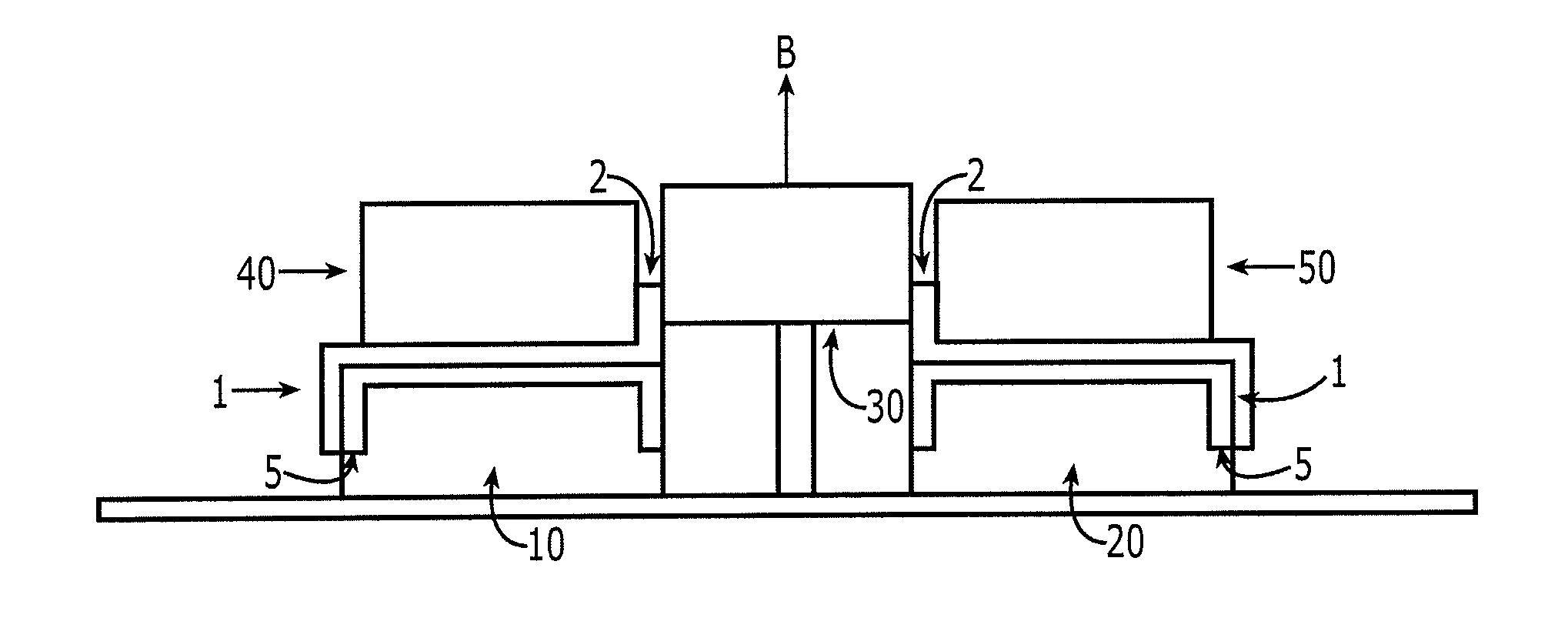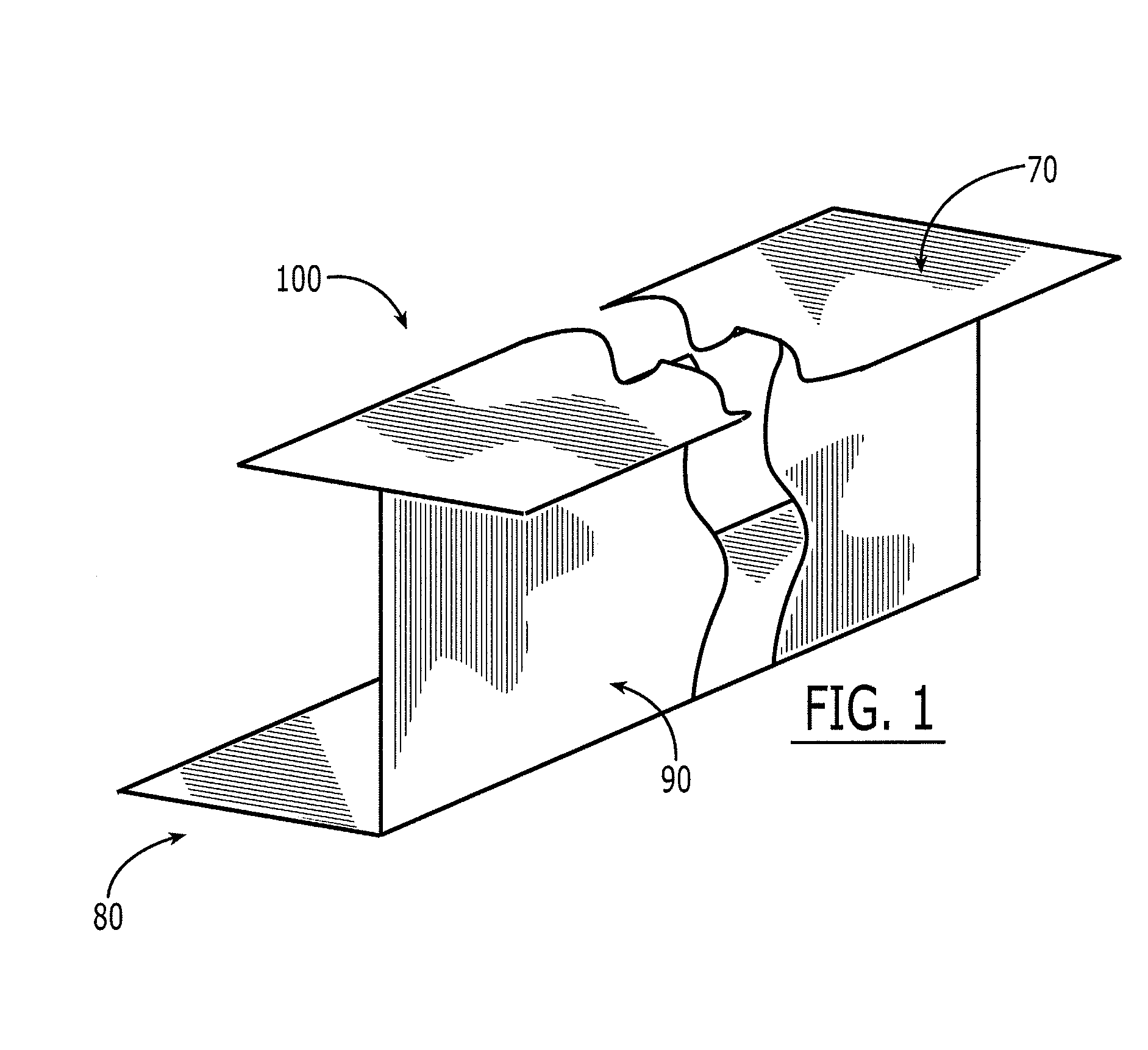Method for forming a composite support beam
a technology of composite support beams and beams, which is applied in the field of forming composite support beams, can solve the problems of limited capacity to meet these requirements, laborious current method of fabrication of “z” channels, and beam forming operation of “z” channels, etc., and achieve the effect of improving formation operations
- Summary
- Abstract
- Description
- Claims
- Application Information
AI Technical Summary
Benefits of technology
Problems solved by technology
Method used
Image
Examples
Embodiment Construction
[0023]The embodiments will now be described more fully hereinafter with reference to the accompanying illustrations, in which some, but not all embodiments of the inventions are shown. Indeed, these embodiments may be embodied in many different forms and should not be construed as limited to the embodiments set forth herein; rather, these embodiments are provided so that this disclosure will satisfy applicable legal requirements. Like numbers refer to like elements throughout.
[0024]Referring now to FIG. 1, there is shown a support beam and, more particularly, a J-beam 100 with a flat cap 70, a flange 80, and a web 90 extending therebetween. J-beams 100 can be formed of composites, metals, and other materials. In conjunction with the fabrication methods described below, J-beams 100 formed of composite materials, such as a ply or sheet of prepreg material, which may include a matrix of graphite fibers preimpregnated with a conventional resin, will be primarily described. J-beams 100 c...
PUM
| Property | Measurement | Unit |
|---|---|---|
| charge | aaaaa | aaaaa |
| strength | aaaaa | aaaaa |
| speed | aaaaa | aaaaa |
Abstract
Description
Claims
Application Information
 Login to View More
Login to View More - R&D
- Intellectual Property
- Life Sciences
- Materials
- Tech Scout
- Unparalleled Data Quality
- Higher Quality Content
- 60% Fewer Hallucinations
Browse by: Latest US Patents, China's latest patents, Technical Efficacy Thesaurus, Application Domain, Technology Topic, Popular Technical Reports.
© 2025 PatSnap. All rights reserved.Legal|Privacy policy|Modern Slavery Act Transparency Statement|Sitemap|About US| Contact US: help@patsnap.com



